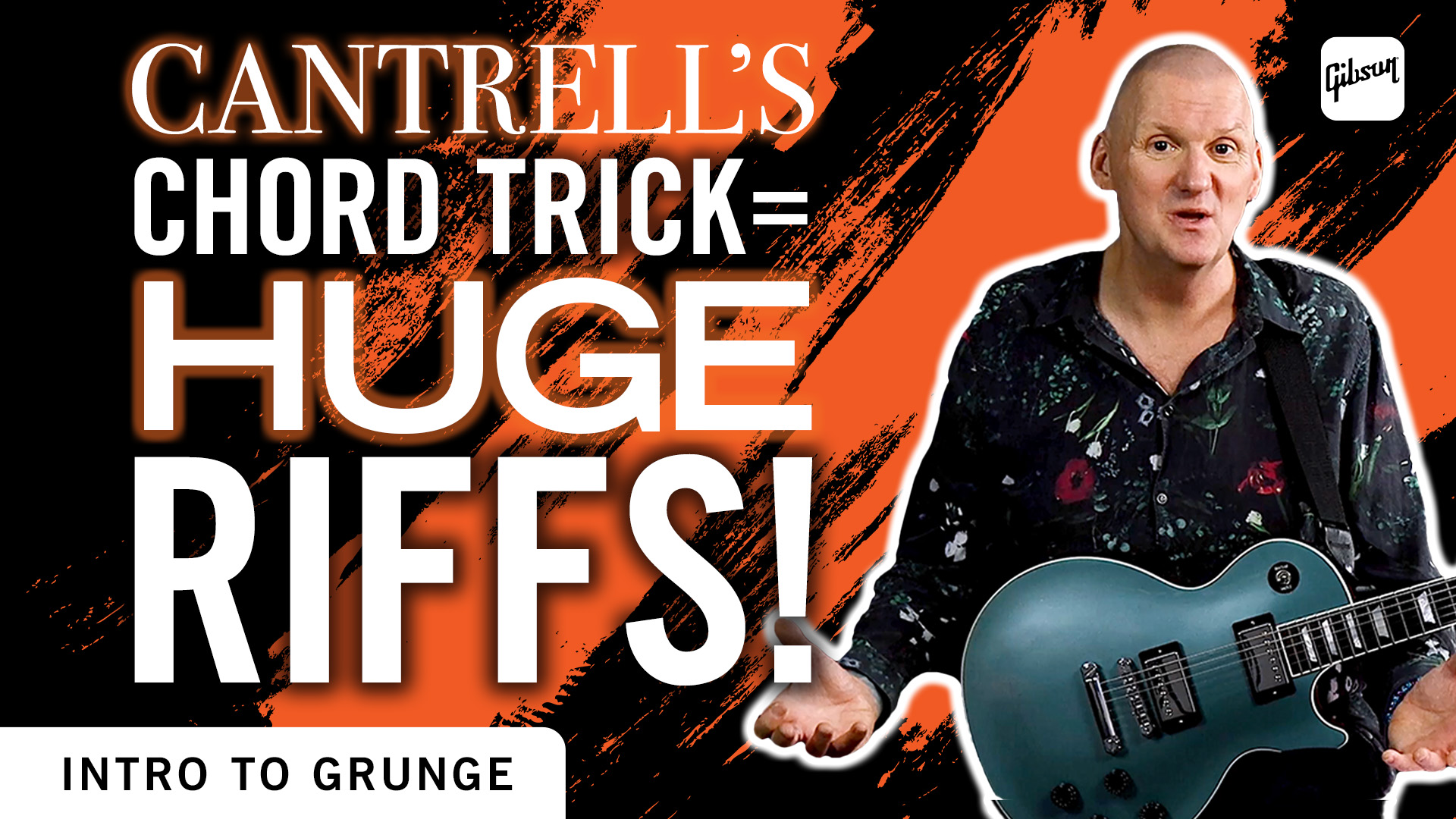Transform your rhythm playing with this lesson on Jerry Cantrell’s guitar style by using expressive movable shapes that feature open strings
In this Gibson App video, you’ll discover that Jerry Cantrell’s guitar work for Alice in Chains is instantly recognizable for its moody, atmospheric quality. Rather than relying on flashy solos, though he has some great ones, Cantrell conjures his sound around deceptively simple chord shapes that ring out with haunting resonance.
By slightly lifting the barre on a standard E-shape barre chord, he exposes the open B and high E strings, creating an ethereal interplay between fretted notes and chiming open tones. This technique is a hallmark of many Alice in Chains songs, most notably “Rooster” and “Heaven Beside You,” and it helped define the grunge era’s signature blend of heaviness and lighter interludes.
At the heart of this style is one movable chord shape. You form an E-shaped barre chord on the A, D, and G strings, fret the root note with your index finger, and then arch that finger just enough so the B and high E strings can ring freely. The result is a voicing that combines the punch of a power chord with the shimmering sustain of open strings. Cantrell uses this approach to great effect, shifting the same shape up and down the neck to give this approach both cohesion and variety.
One of the simplest yet most effective progressions using this shape moves through four positions: F# at the second fret, F at the first fret, B at the seventh fret, and A at the fifth fret. Using the F# as the root offers you the added 4th and the flat 7 on that chord—AKA, the “Alex Lifeson chord” that appears in the opening of the epic Rush song, “Hemispheres.” It’s a desert island chord for MESA/Boogie® signature artist John Petrucci, too. Because the pedal tones are in the higher register—in this case, it’s a double pedal—it’s typically called an inverted pedal. Oh no! Theory.
You begin by striking the F# powerchord and then raking across the D–G–B–E strings, letting the open notes ring. Dropping down a semitone to an F chord yields an immediately darker hue, then leaping up to a B chord high on the neck brings brightness back into the mix. Finally, sliding down to A provides a satisfying resolution, especially when each voicing retains the open-string shimmer. You can also just hit the F# low note, then rake across the A-D-G-B-E strings as you move through this progression. Similar outcomes, either way.
To really capture Cantrell’s feel, play the progression against a steady pulse—whether it’s a metronome click or a drum loop—and give each chord a full measure. Pay close attention to maintaining the exact same finger arch through every shift; any accidental muting of the B or high E string will kill the signature sparkle. As you move between positions, keep your fretting hand relaxed and think of the shape as one unit gliding up and down the fretboard. You can also experiment with dynamics by digging in more on the lower strings or lightly brushing the higher ones.
Practicing this riff for just 10 to 15 minutes each day will not only bring you closer to Cantrell’s atmospheric style but also expand your own rhythmic and voicing vocabulary. Start slow, lock in the four-chord sequence, then gradually crank up the tempo once the shifts feel fluid. Before long, you’ll have internalized one of grunge’s most iconic guitar techniques—and you’ll understand why Jerry Cantrell is rightly celebrated as a true riff master.
Explore the world of the Gibson App and start your free trial on iOS and Android devices.

